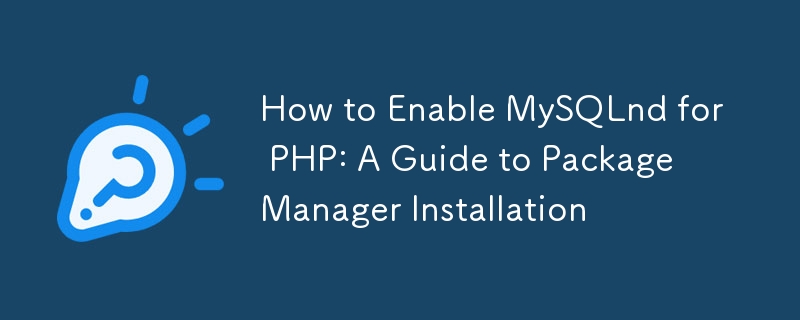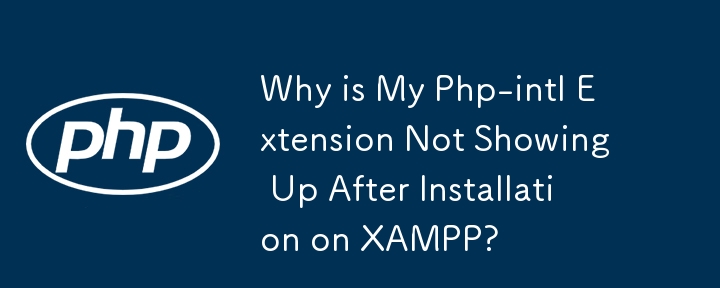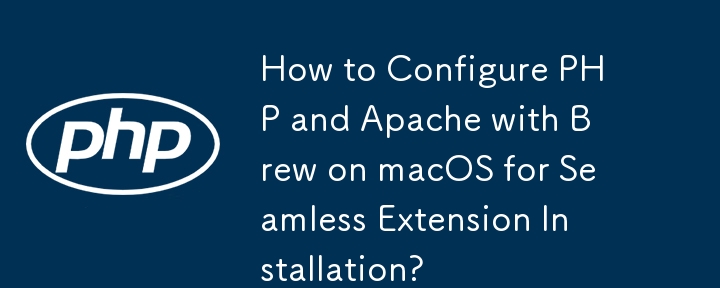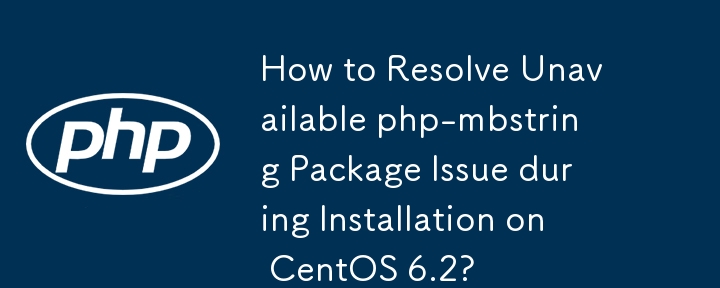Found a total of 10000 related content
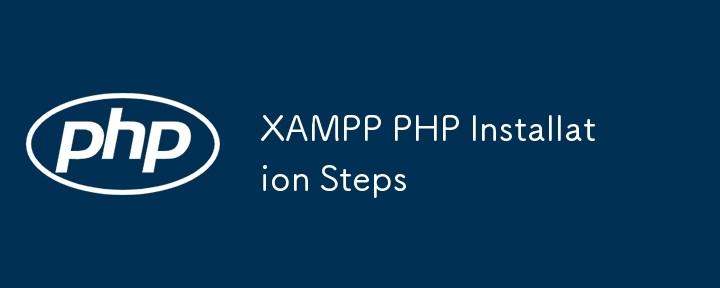
XAMPP PHP Installation Steps
Article Introduction:It is not difficult to install the PHP environment of XAMPP with clear steps. 1. Download the XAMPP installation package of the corresponding system from the official website, and recommend the full version to integrate PHP components; 2. Select the non-system disk path during installation, and decide whether to install Apache and MySQL as services as needed; 3. Start Apache through the XAMPP control panel to access localhost to verify the running status; 4. Place the PHP file in the htdocs directory and test it through the browser; 5. If you need to expand the function, you can enable the corresponding module in php.ini and restart Apache. As long as you follow the steps and pay attention to the details, most users can complete the installation and configuration smoothly.
2025-07-18
comment 0
644

Getting Started with PHP Installation
Article Introduction:The key to installing PHP is to clarify the usage scenario and system environment. 1. Determine the operating system and PHP version: Windows can use XAMPP or WAMP, macOS recommends Homebrew, Linux is installed through apt/yum, and it is recommended to choose version 8.1 or 8.2. 2. Local development environment construction: XAMPP, MAMP or Docker is recommended. You can also install it with Homebrew and verify it with php-v. 3. Server installation PHP: Taking Ubuntu as an example, execute aptupdate and installation commands and restart Apache/Nginx, and run through info.php test. 4. Frequently asked questions: Pay attention to extension activation, consistent path, permission settings and
2025-07-18
comment 0
316

PHP 8 Installation Guide: Step-by-Step for Windows, macOS, and Linux
Article Introduction:This guide details PHP 8 installation on Windows, macOS, and Linux. It covers OS-specific steps, including using package managers (Homebrew, apt), manual installation from source, and configuring PHP with Apache or Nginx. Troubleshooting tips are a
2025-03-10
comment 0
680

PHP Installation on Linux
Article Introduction:There are two main ways to install PHP on Linux: use package manager to install and source code to compile and install. For newbies or users who do not have special requirements for the version, it is recommended to use a package manager to install it. For example, running sudoaptupdate and sudoaptinstallphp on Ubuntu/Debian. On CentOS, you can first install the EPEL source and then install it with yum. After the installation is completed, you can verify through php-v and install common extensions. If you need a specific version or custom function, you should choose source code compilation and installation. The specific steps include downloading the source code package, decompression, and configuration (such as ./configure--prefix=/usr/local/php--with-co
2025-07-18
comment 0
345

How to Resolve PHP Installation Issues After Using Homebrew\'s mcrypt?
Article Introduction:Troubleshooting PHP Installation After Using Homebrew's mcryptProblem: PHP installed via Homebrew doesn't appear in phpinfo() when Apache is in use.Check for PHP Differences:Run brew search php to verify if there are multiple PHP versions.Check the o
2024-10-19
comment 0
702

phpMyAdmin installation configuration method and PHP skills
Article Introduction:This article details phpMyAdmin installation via package managers, manual methods, or Docker. It highlights crucial configuration steps, security best practices, and common pitfalls like permission issues and missing PHP extensions. Optimization st
2025-03-04
comment 0
618

Troubleshooting PHP Installation Issues
Article Introduction:There are four common problems when installing PHP, namely: 1. PHP cannot start or report an error. You should check the php.ini configuration error and verify it with php-t; 2. When the installation of the extension fails, confirm whether the underlying dependency is fully installed; 3. The web server cannot parse the PHP file and needs to check whether PHP-FPM is enabled and match the server configuration; 4. For multiple version conflicts, you can view the current use version through whichphp and php-v and adjust the environment variables or switch tools. When encountering problems, you should gradually check the configuration and log to locate the cause.
2025-07-18
comment 0
400

PHP Installation for Beginners
Article Introduction:Installing PHP is not complicated for novices. The key is to clarify the system environment and version requirements and follow the steps. First, you need to confirm the operating system (Windows, macOS or Linux) and choose a stable version such as PHP8.1 or 8.2; secondly, you can install it through manual installation, using integrated environments (such as XAMPP, WAMP) or package management tools (such as apt-get and brew). Then configure environment variables to ensure that the command line can recognize PHP instructions and run through the phpinfo() page test; finally pay attention to common problems, such as Apache port occupation, php.ini file path errors and extensions not enabled, etc., and check them one by one to complete the installation smoothly.
2025-07-17
comment 0
972
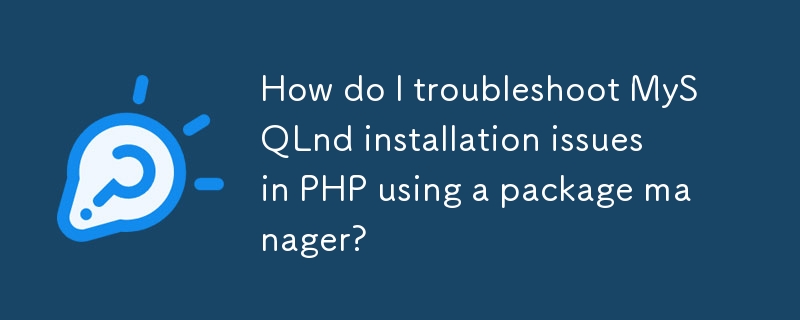
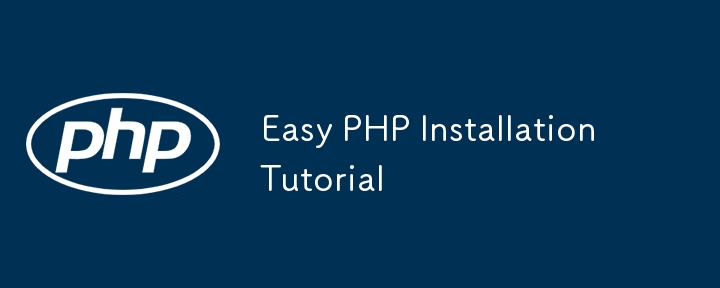
Easy PHP Installation Tutorial
Article Introduction:The way to install PHP depends on the operating system. 1. On Windows, use XAMPP to download and install it. After starting Apache, place the .php file in the htdocs directory and access it through localhost; 2. On macOS, install the latest version through Homebrew and link it globally, and can be used with Apache or Laravel built-in server; 3. On Ubuntu, install PHP and commonly used extensions through APT; 4. After installation, it is recommended to adjust the error display, upload size limit and other settings in php.ini, and restart the server to ensure that the configuration takes effect.
2025-07-16
comment 0
138
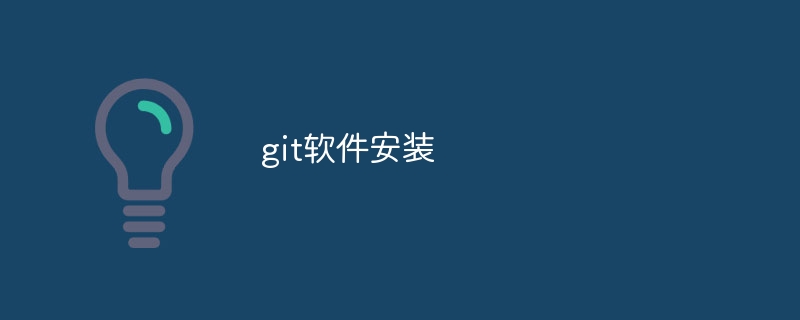
git software installation
Article Introduction:Installing Git software includes the following steps: Download the installation package and run the installation package to verify the installation configuration Git installation Git Bash (Windows only)
2025-04-17
comment 0
751
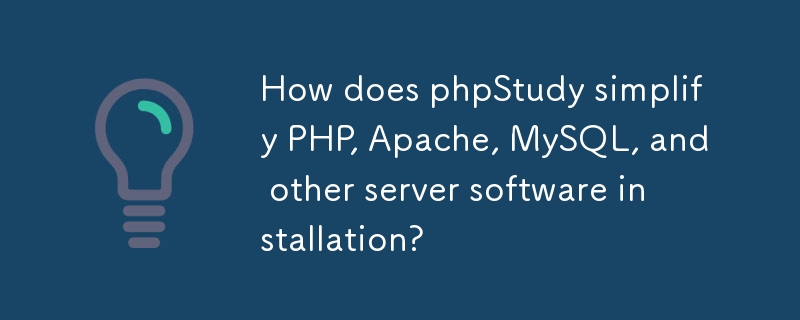
How does phpStudy simplify PHP, Apache, MySQL, and other server software installation?
Article Introduction:phpStudy streamlines local web server setup by bundling PHP, Apache, MySQL, and other components into a single installer. It simplifies installation, configuration, updates, and management, saving time and reducing complexity compared to manual setu
2025-03-11
comment 0
1021

PHP 8 Installation Guide
Article Introduction:The steps to install PHP8 on Ubuntu are: 1. Update the software package list; 2. Install PHP8 and basic components; 3. Check the version to confirm that the installation is successful; 4. Install additional modules as needed. Windows users can download and decompress the ZIP package, then modify the configuration file, enable extensions, and add the path to environment variables. macOS users recommend using Homebrew to install, and perform steps such as adding tap, installing PHP8, setting the default version and verifying the version. Although the installation methods are different under different systems, the process is clear, so you can choose the right method according to the purpose.
2025-07-16
comment 0
886
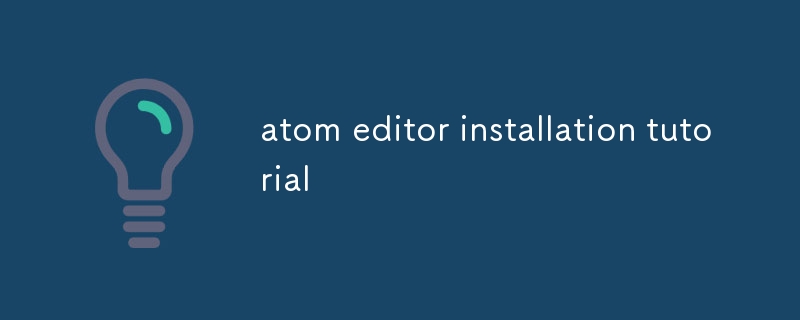
atom editor installation tutorial
Article Introduction:This tutorial details installing Atom, a customizable text editor, on Windows. It covers the installation steps, system requirements (Windows 7 , sufficient RAM & disk space), and clarifies that package installation occurs post-installation via
2025-03-06
comment 0
736

Laravel framework installation latest method
Article Introduction:This article provides a comprehensive guide to installing the latest Laravel framework using Composer. It details prerequisites, step-by-step instructions, troubleshooting common installation issues (PHP version, extensions, permissions), and minimu
2025-03-06
comment 0
516









